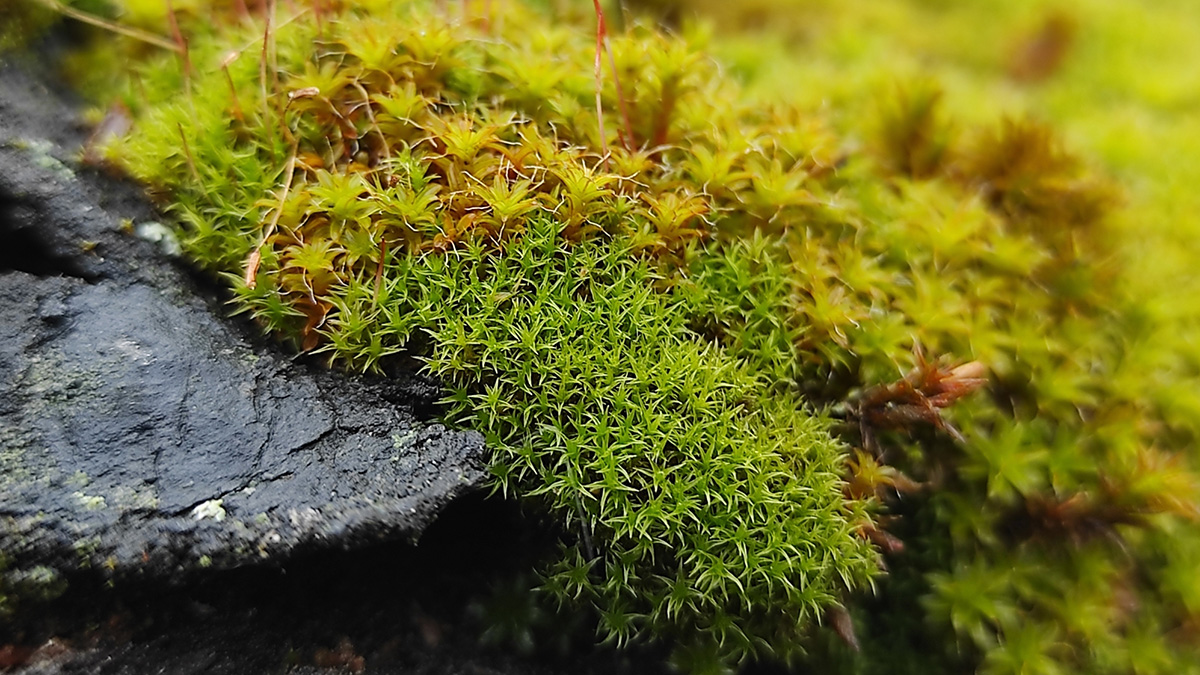In the plant world, mosses keep it on the down-low. Without the vascular plumbing needed to move water and nutrients within themselves, mosses cling close to their supports—rocks, trees, or soil. With such a low profile, they sometimes seem underappreciated. Now researchers have taken a global survey of mosses, finding that they cover an area roughly the size of China and that they perform key roles across diverse ecosystems.
“Mosses have a bit of a bad rap. We think [moss is] a slimy green thing that grows on rocks or grows around the swimming pool.”
“Mosses have a bit of a bad rap,” said David Eldridge, an ecologist at the University of New South Wales in Sydney and lead author of the study, which was published in Nature Geoscience. “We think it’s a slimy green thing that grows on rocks or grows around the swimming pool.”
But Eldridge has always loved mosses. Put them under a microscope, he said, and you can glimpse something like a forest in miniature, complete with animals climbing around the vegetation. (In this case, the animals include microscopic invertebrates like mites, springtails, and tardigrades.)
Researchers have previously delved deep into the characteristics of some species, such as sphagnum moss, which grows in boreal forests, bogs, and swamps. And scientists have explored mosses’ roles in particular ecosystems, such as hot deserts and polar environments. But “no one’s ever really considered the importance of mosses across the globe,” Eldridge said.
Eldridge and his colleagues cataloged moss coverage at sites around the world and correlated mosses’ presence with soil attributes, ecosystem functions, and microbial habitats. As part of a global study comparing urban and natural green spaces, Eldridge and his team sampled 123 sites across all seven continents. They collected soil samples from spots under moss to compare with bare soil and soil covered with vascular plants such as trees and ferns.
They analyzed these soil samples for 24 attributes, ranging from soil biodiversity to nutrients, including carbon, nitrogen, and phosphorus. Eldridge’s team also noted environmental conditions at each site, including the climate and other vegetation. Then, they extrapolated their moss coverage measurements to places with similar environmental conditions across the world.
Mosses in the Spotlight
Overall, the researchers estimated that mosses cover at least 9.4 million square kilometers (3.7 million square miles) of Earth’s surface. And that figure is likely “a huge underestimate,” Eldridge said. It doesn’t include some of the planet’s mossiest places, such as boreal forests, where mosses carpet the ground. Even where you find bare soil in the boreal forest, Eldridge said, “there’s probably a 99.9% chance that it was dominated by mosses recently.”
The soil sample analysis revealed some general trends that span a variety of ecosystems. First, mosses sequester far more carbon than bare soils. Globally, the team estimated mosses stash some 6 gigatons more than bare soils would. Soil under mosses also tended to have higher levels of certain nutrients, including magnesium, nitrogen, and phosphorus, than uncovered soils, suggesting that mosses play a role in moving these nutrients around. And measurements of enzymes hinted that the ground beneath mosses better supports the breakdown of organic matter than bare soils. These ecosystem roles were similar to those found for vascular plants, the researchers reported.
Mosses aren’t always as efficient at these tasks as vascular plants, Eldridge said, but they’re still “critically important” because of their global coverage, especially in places where vascular plants don’t thrive. For instance, in the desert, mosses fortify soils by sucking in atmospheric carbon through photosynthesis and releasing it to the soil when they decay. Their structure also traps soil and keeps it from blowing away, he said.
Underestimating Mosses
This was an “ambitious study,” said Kirsten Fisher, a bryologist at California State University, Los Angeles, who wasn’t part of the work. It’s notable that the researchers collected so many samples and used them to predict moss coverage, she said.
But the study’s design—seeking comparisons between soils that were and weren’t moss covered—may have skewed the results, Fisher said. The study leaves out the “heavy hitters,” she explained, places like arboreal forests and peatlands, where perhaps the most moss-driven carbon sequestration occurs.
So using the study’s samples to extrapolate leads to “odd conclusions” about the types of ecosystems where mosses are the most important. Furthermore, about half of the environments sampled were urban, Fisher said, which may not provide broadly representative data for the global model.
“They’re everywhere, so I’m hoping people look at them with a fresh eye.”
The researchers also seemed to conflate mosses’ ecosystem roles with those of the entire soil community, Fisher said. In the desert, for instance, it’s unlikely that mosses would be found alone. They would be part of a community called a biocrust—a craggy living layer that tops the soil and contains algae, bacteria, fungi, and more. In such a community, she said, microbes are probably responsible for capturing more nitrogen than mosses.
Even with the somewhat limited sampling, however, Fisher acknowledged that the team found mosses make some pretty significant contributions to soil processes. “That’s, in and of itself, a pretty impressive result,” she said.
That result is part of Eldridge’s aim—to place mosses in the limelight and prompt field ecologists to pay these unassuming plants more notice. “They’re everywhere, so I’m hoping people look at them with a fresh eye.”
—Carolyn Wilke (@CarolynMWilke), Science Writer


